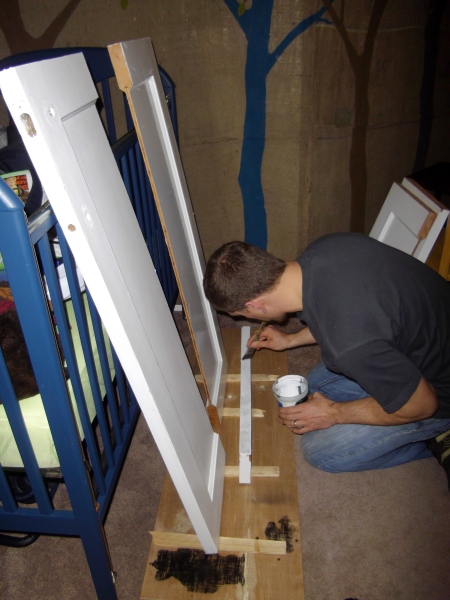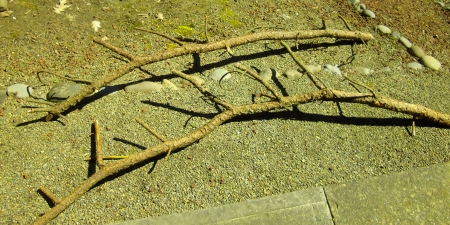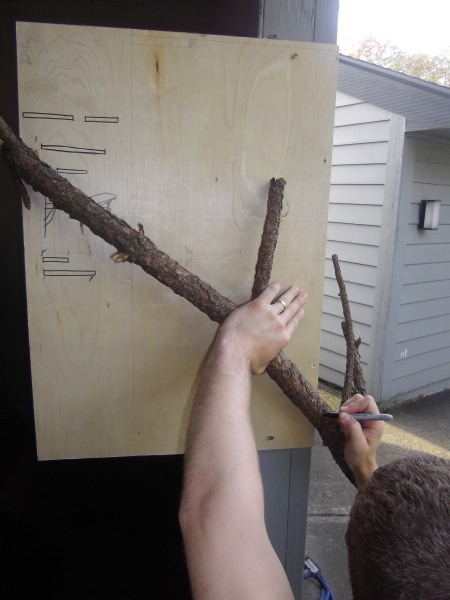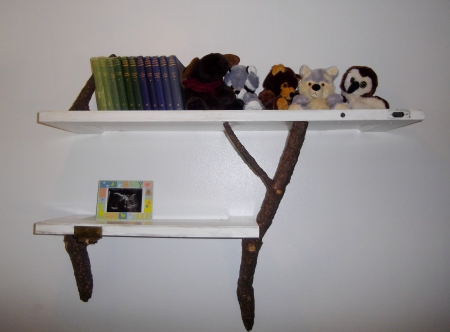
Patience. This tree took a lot of patience. In particular, fitting the randomly shaped platforms between and around tree branches. This portion of the project was the slowest, yet in my opinion, makes the tree really pop.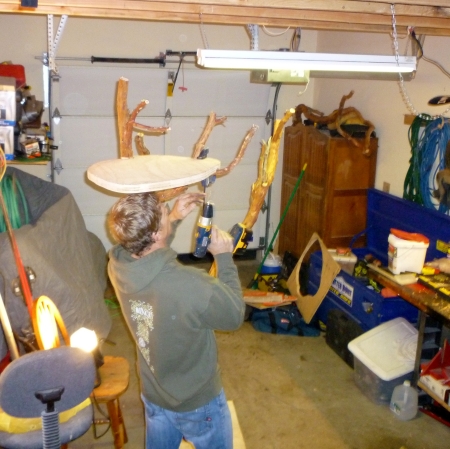
Using the shape of the tree, we determined where the platforms would be, what size and shape they were to become, and how we envisioned the cats getting to each one. Saki is a spry and wiry guy, but Pixie…not so much. She could be called small, but portly. To date, most of the smaller in-between levels are unused by Saki, but Pixie will carefully pick her way to the top most every time she uses the tree.

Using a 2′ level, string line, tape measure, sharpie, and an eye for straight lines, we started in. A laser level would be a good idea too. The first points to be defined and cut were the bigger branches. Smaller limbs can be manipulated more easily than the anchor branches.

The main tools to make the cuts are a reciprocating saw (“Sawzall”), angle grinder, hand saws of various shapes and sizes, and the good ole fashion hammer and chisel. I generally start with the sawzall, dig with the chisel, and fine tune with the grinder.
***A word to the wise…wear some protective gear. I am no model of wisdom…***

In order to ensure the best fit and location, cut and fit the platforms one at a time. We would cut the shape we wanted, then modify as the tree demanded. To get tight and snug connections, whittling away at both branch and platform is mandatory.
We cut our platforms out of plywood scraps from one of my job sites. Scraps of this size are pretty easy to come by as they are considered useless once they are less than 16″ wide. These platforms are 1 1/8″ thick. If you cannot find thicker plywood, two pieces of 1/2″ laminated and screwed together will work just fine.
Live load testing is recommended.

To make things comfy, we rounded off all the bottom edges with a router and 1/4″ round over bit. Then, an old sleeping bag pad was cut to fit.

After trying to cut, then glue the pad in place, we reverted to cutting the pad a little big, gluing it to the platform, then trimming – much faster. After applying 3M spray adhesive, the platforms were placed foam down and loaded up with anything heavy to ensure a good bond.

We picked up a couple of yards of fleece from a fabric store and set to wrapping the platforms. Fleece is soft and stretchy, just what was needed to deal with the irregular platform shapes.
The top was covered first, wrapped over the edges and attached it to the bottom using Elmer’s glue and staples. A second piece of fleece was cut just shy of the edge of the platforms and glued over the folds and staples.

This portion of the work was completed after all the platforms had been cut and fit into place. Minor adjustments to the tree were needed due to the extra thickness.

I used a variety of deck screws ranging from 1″ to 6″ in length to attach the platforms to the tree limbs. My goal was to hide the fasteners as much as possible and to do so, I countersunk the screws as much as I could. Many of them are buried in knot holes and crevices that the tree offered.
A couple were driven through the fleece and platform and into the tree. In these instances, the screws often sliced right through the fleece leaving a small, barely noticeable hole.

In cases where the holes had to be drilled, some red and black markers, then stain provide a decent camouflage. If you were a real pro, you’d probably use wood filler, but that’s above a beyond what our little life demands.
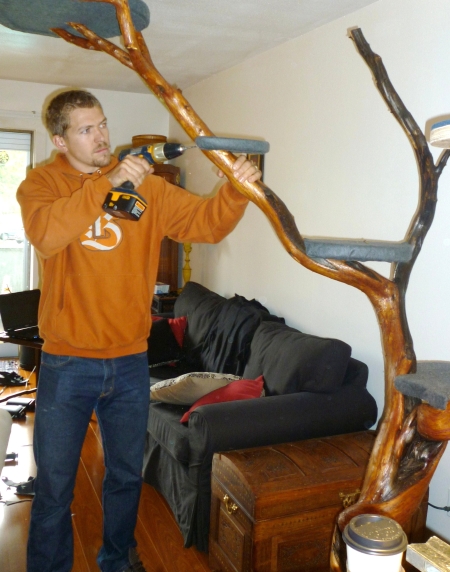

One of our platforms surrounds a branch completely and had to be installed in two pieces. The picture above and below show the fleece wrap of the platform after it has been attached to the tree.

And that is how we assembled the platforms. Comfy, clean, and secure.
The Forest Ranger that pulled us over quizzically eyed the massive juniper in the truck bed, “It’s a little early for Christmas tree cutting in July don’t you think?” Not when you’ve got 6 months of preparations…

It doubles as a lovely Christmas tree, don’t you think?

























